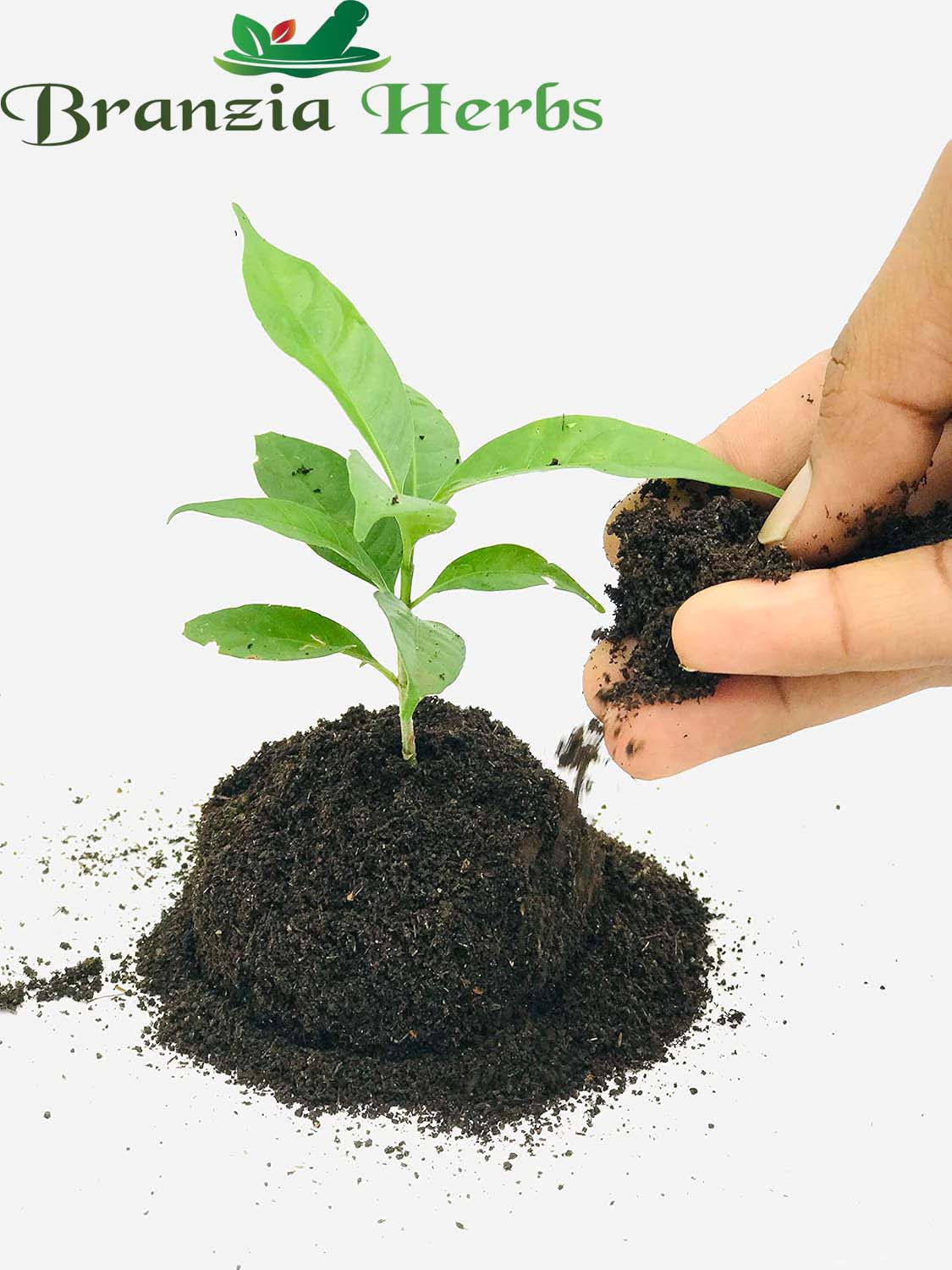Ashwagandha (Withania somnifera), often referred to as Indian Ginseng or Winter Cherry, is a prominent herb in Ayurvedic medicine known for its adaptogenic and restorative properties. It's prized for its ability to help the body cope with stress, enhance stamina, and support overall health. Here’s a comprehensive guide on Ashwagandha, including its characteristics, benefits, and planting care:
Characteristics
-
Appearance:
-
Plant: Ashwagandha is a small shrub that typically grows to about 30-90 cm (12-36 inches) in height. It has broad, ovate leaves and small, greenish-yellow bell-shaped flowers.
-
Roots: The medicinal part of the plant is its root, which is harvested for its therapeutic properties. The roots are usually fleshy and can be up to 10-15 cm (4-6 inches) long.
-
Plant Size:
-
Height: Grows to about 30-90 cm (12-36 inches) tall.
-
Spread: Can spread about 30-60 cm (12-24 inches) wide.
Benefits
-
Medicinal Uses:
-
Adaptogen: Ashwagandha is renowned for its adaptogenic properties, helping the body adapt to stress and maintain balance.
-
Stress Relief: It can help reduce cortisol levels, thereby alleviating stress and anxiety.
-
Energy and Stamina: Enhances physical performance, energy levels, and overall stamina.
-
Immune Support: May boost the immune system and support overall health.
-
Cognitive Function: Some studies suggest it may improve memory and cognitive function.
-
Health Benefits:
-
Anti-inflammatory: Ashwagandha has anti-inflammatory properties that may help with chronic inflammation and related conditions.
-
Hormonal Balance: It may support hormonal balance and help regulate thyroid function.
Planting Ashwagandha Seeds
-
Preparation:
-
Seed Treatment: Soak Ashwagandha seeds in water for 24 hours before planting to improve germination rates.
-
Timing:
-
Optimal Season: Plant seeds in spring after the last frost or start seeds indoors 6-8 weeks before the last frost. Ashwagandha thrives in warm temperatures.
-
Soil and Location:
-
Soil Type: Prefers well-drained, sandy-loam soil with a slightly acidic to neutral pH. Ensure good drainage to prevent root rot.
-
Location: Choose a sunny location with full sun. Ashwagandha requires at least 6-8 hours of direct sunlight daily for optimal growth.
-
Planting:
-
Sowing Seeds: Sow seeds about 1/4 inch (0.6 cm) deep in the soil. Space seeds or seedlings about 30-45 cm (12-18 inches) apart.
-
Germination: Seeds typically germinate within 14-21 days. Keep the soil consistently moist but not waterlogged during this period.
-
Watering:
-
Initial Care: Water the soil thoroughly after planting and maintain consistent moisture until seedlings are established.
-
Ongoing Care: Water regularly but allow the soil to dry out slightly between waterings. Ashwagandha prefers moderately moist conditions but can tolerate some drought.
-
Fertilizing:
-
Nutrients: Ashwagandha does not require heavy fertilization. Apply a balanced fertilizer or compost at planting time and as needed throughout the growing season. Avoid excessive nitrogen, which can lead to excessive leaf growth at the expense of root development.
Care and Maintenance
-
Pruning:
-
Trimming: Ashwagandha does not generally require pruning. However, removing any dead or damaged leaves can help maintain plant health.
-
Pest and Disease Management:
-
Monitoring: Ashwagandha is relatively pest-resistant but can occasionally be affected by pests such as aphids and diseases like fungal infections.
-
Control: Use organic pest control methods if needed and ensure good garden hygiene. Maintain good air circulation around the plants to reduce the risk of fungal infections.
-
Harvesting:
-
Roots: Harvest the roots when the plant is 8-12 months old. The roots are dug up, cleaned, and dried for use. Harvesting should be done in late fall or early winter before the plant goes dormant.
-
Leaves and Flowers: The leaves and flowers can be used for minor medicinal purposes but are less commonly used than the roots.
-
Protection:
-
Winter Care: In colder climates, Ashwagandha is typically grown as an annual and does not require winter protection. In milder climates, it can be overwintered in a greenhouse or indoor garden.
Environmental Considerations
-
Climate Adaptation: Ashwagandha thrives in warm, sunny climates. It may struggle in extremely cold temperatures and should be protected from frost.
-
Sustainability: Ensure planting practices are sustainable and adhere to local regulations regarding agriculture and conservation.
Summary
Ashwagandha is a highly valued herb with numerous health benefits, particularly for its adaptogenic properties. By following proper planting and care guidelines, you can successfully grow Ashwagandha and harness its therapeutic potential. The plant thrives in warm, sunny conditions and requires well-drained soil and regular watering for optimal growth. Harvesting the roots at the right time ensures the best quality for medicinal use. Ashwagandha’s ability to enhance overall well-being makes it a valuable addition to any herb garden.







